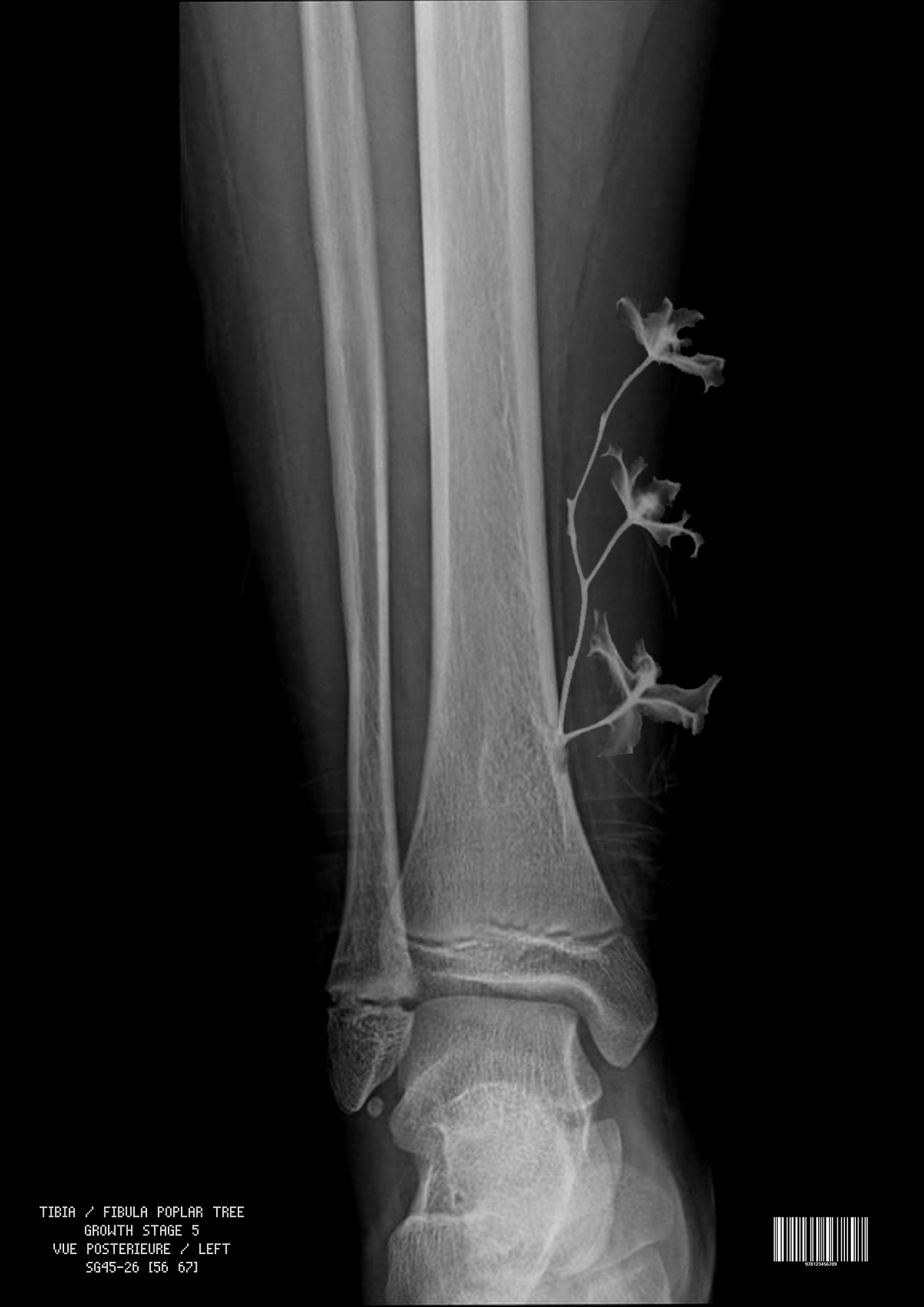January 23rd, 2021
Blurring the Boundaries
Botanical Bodies, or Becoming a Plant-human Chimaera
Text & images © Marie Declerfayt
While the enhancement of the human body has traditionally been imagined within the frame of the mechanical and digital worlds - nourishing a cyborg narrative that is slowly becoming a reality - recent scientific discoveries have rendered it possible to modify previously overlooked organisms - such as plants - to develop innovative functions and serve original design purposes. Such findings enable us to imagine a new kind of trans-humanity, one in which vegetal matter might become an integral component of our body.
Hybrids between species have historically been perceived as aberrations. As American anthropologist, Anna Lowenhaupt Tsing points out, “category-crossing beings were abhorrent to Enlightenment ways of ordering the world. Later on, rationalisation meant individualisation, the creation of distinct and alienated individuals, human and non-human.” The individualisation of our bodies somehow produced a separation with other living beings, where to be human means to demonstrate a difference and taking advantage of other species - rather than collaborating with them - is the norm. But what if we became more prone to merging with non-human live forms instead of seeking to stand out?
Botanical Bodies is a speculative design scenario I developed in 2019 which investigates this possibility. Using bones and wood as a case study for a human-plant hybridisation process, the project envisions a future in which plants could be employed as raw material to create human-compatible organs. Suggesting the opportunity of dissolving the distinctions between humans and plants, crowds and forests, bones and wood, Botanical Bodies paves the way to a novel and more sustainable synergy. Seeing wood not as an inert matter but as an organic and evolving element makes it possible to adopt a new perspective: the possibility of becoming a chimaera with a plant.
Hybrids between species have historically been perceived as aberrations. As American anthropologist, Anna Lowenhaupt Tsing points out, “category-crossing beings were abhorrent to Enlightenment ways of ordering the world. Later on, rationalisation meant individualisation, the creation of distinct and alienated individuals, human and non-human.” The individualisation of our bodies somehow produced a separation with other living beings, where to be human means to demonstrate a difference and taking advantage of other species - rather than collaborating with them - is the norm. But what if we became more prone to merging with non-human live forms instead of seeking to stand out?
Botanical Bodies is a speculative design scenario I developed in 2019 which investigates this possibility. Using bones and wood as a case study for a human-plant hybridisation process, the project envisions a future in which plants could be employed as raw material to create human-compatible organs. Suggesting the opportunity of dissolving the distinctions between humans and plants, crowds and forests, bones and wood, Botanical Bodies paves the way to a novel and more sustainable synergy. Seeing wood not as an inert matter but as an organic and evolving element makes it possible to adopt a new perspective: the possibility of becoming a chimaera with a plant.





From a human perspective, there is a lot we could gain from becoming a bit more plant. Entering into a symbiotic relationship with the vegetal realm would entail a different way of approaching life. It could represent the first step to create a mode of action that maintains - rather than threatens - the integrity of the ecosystems we are part of. Understanding our bodies in relation to other species would, in fact, help us perceive ourselves as part of a broader, interconnected network of living beings rather than individuals defined by seemingly unique characteristics.
By establishing a symbiosis with other organisms based on care and respect, we could strike a better balance between the worlds of human and non-human others. Blurring species boundaries might help us go beyond our conception of the vegetal world as a passive, unconscious resource for human use and open us to a shared, embodied existence of cooperation, collaboration and consciousness.
This short essay illustrates some of the thoughts behind Botanical Bodies, a project developed by French designer Marie Declerfayt which is part of Plant Fever’s travelling exhibition. Read more about Declerfayt’s research here
By establishing a symbiosis with other organisms based on care and respect, we could strike a better balance between the worlds of human and non-human others. Blurring species boundaries might help us go beyond our conception of the vegetal world as a passive, unconscious resource for human use and open us to a shared, embodied existence of cooperation, collaboration and consciousness.
This short essay illustrates some of the thoughts behind Botanical Bodies, a project developed by French designer Marie Declerfayt which is part of Plant Fever’s travelling exhibition. Read more about Declerfayt’s research here
Bibliography
Heather Anne Swanson, Elaine Gan, Anna Lowenhaupt Tsing and Nils Bubandt, Art of Living on a damaged planet: Ghosts and Monsters of the Anthropocene, University Of Minnesota Press, 2017
Anna Tampieri, Simone Sprio, Andrea Ruffini, Giancarlo Celotti, Isidoro Giorgio Lesci and Norberto Roveri, “From wood to bone: multi-step process to convert wood hierarchical structures into biomimetic hydroxyapatite scaffolds for bone tissue engineering”, Journal of Material Chemistry, Issue n°28, 2009
Jeffrey T. Nealon, Plant Theory : Biopower and Vegetable Life, Stanford University Press, 2009
About the author
Fascinated by the human body as a set of infinitely complex biological mechanisms, French designer Marie Declerfayt uses art as a translation tool between the microscopic and the tangible, the current and the speculative, the known and the to be discovered. mariedeclerfayt.eu / @m4r13_d3cl3rf4y7